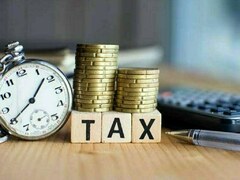ISLAMABAD: The Federal Board of Revenue (FBR) has projected the tax-to-gross domestic product (GDP) ratio at 9.5 percent during 2022-23 against 8.5 percent in 2021-22.
The FBR’s report, “Evidence-Based Revenue Forecasting (2022-23),” revealed that the tax-GDP ratios are used to project the extent of tax collection in the economy on a relative scale.
The FBR revenue collection has shown a steady increase in the last few years. Despite ongoing Covid-19 challenges such as lockdowns and disruptions of international supply chains, the growth in revenues was 4.4 per cent immediately after the first pandemic year, which was further increased to 18.7 per cent in 2020-21.
The GDP base is important to show the scale and scope of economic activities.
The FBR’s tax-GDP ratio remained between 8.4 percent to 9.8 percent during last five years. During FY 2018-19 and FY 2019-20, tax-GDP ratio declined, which was mainly attributed to the Covid-19 pandemic-related economic challenges. However, again it started to increase in FY 2020-21 as pandemic was effectively managed in Pakistan and world was also opening up, the FBR report added.
The Economic Survey (2021-22) stated that the tax-to-GDP ratio is the real index for measuring tax compliance, capacity, and efficiency in the tax system.
FBR set to achieve Rs6.1trn revised tax collection target
A higher tax-to-GDP ratio allows the government to rely more on domestic resources rather than external sources of revenue, while also ensuring the availability of sufficient funds to meet a country’s development and social expenditures. Unfortunately, the tax-to-GDP ratio in Pakistan remains low over the years. There are a variety of factors responsible for the low tax-to-GDP ratio including a narrow tax base particularly agriculture contributing minimally to the tax collection, tax evasion, poor documentation, the informal economy, exemptions/concessions, smuggling, weak audit and enforcement, a lack of automation, and lengthy litigation.
As a result of insufficient tax revenues, the country has faced numerous challenges over the years in providing much-needed fiscal space for priority areas such as infrastructure, education, health, and targeted social assistance, it added.
Copyright Business Recorder, 2022
























Comments
Comments are closed.